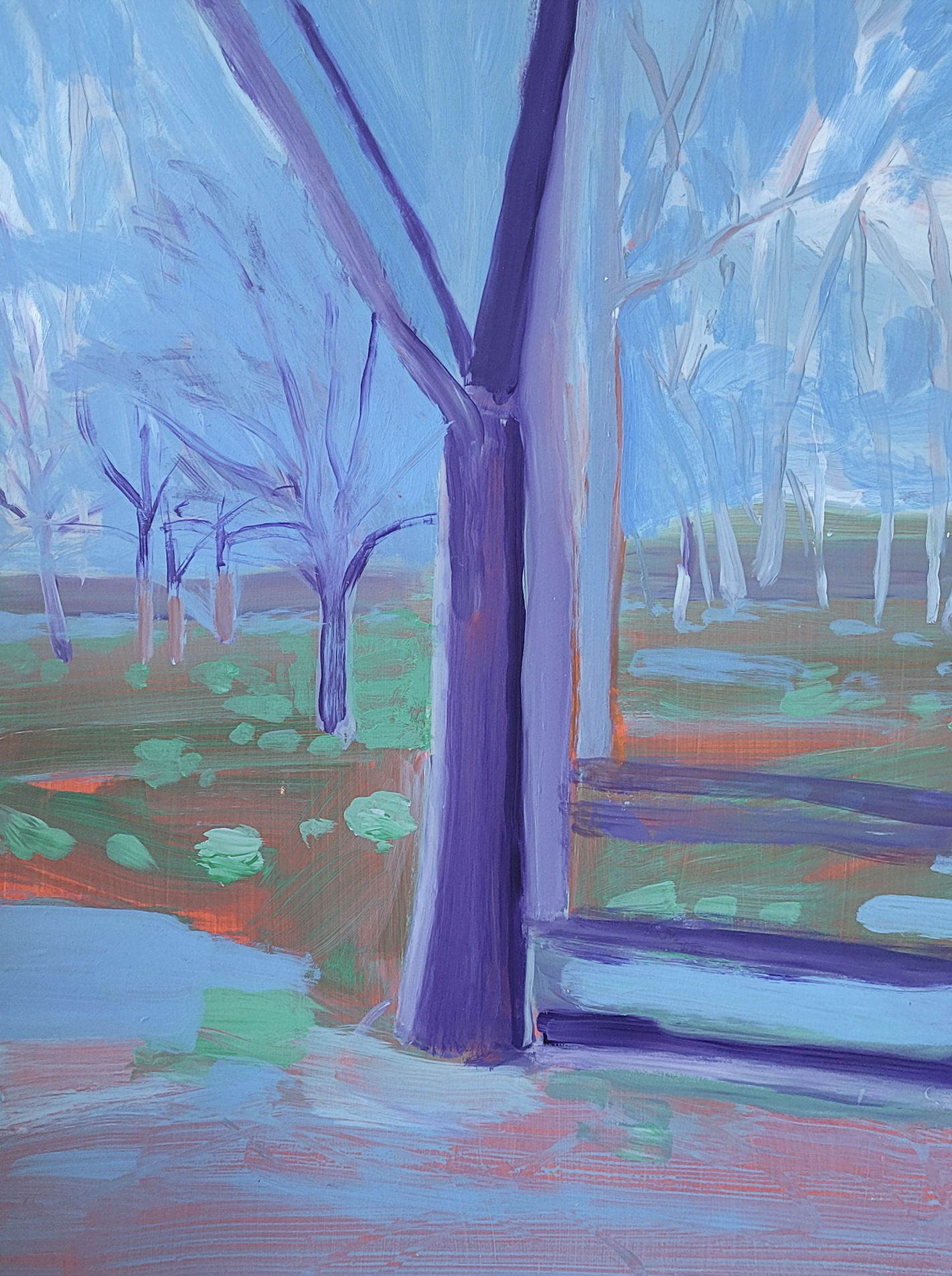For her first solo show at New Art Projects, Kate Belton started making works on paper, working in mono print and watercolour. Her subject matter is at first glance, landscape, however ideas of memory, pattern and repetition also inform her compositions. The works for this exhibition are centred on the east end of London and developed using photographs taken by the artist of the surrounding area. However these are not formal compositions, the references are taken from the hinterland, the edges of the city: canal towpaths, abandoned buildings, land about to be re-developed, or overlooked in the regeneration of the area.
Belton states: “They are about forgotten spaces, and of the cracks that develop in our landscape and in the process of painting itself. The subject is not just about what is depicted literally, but also about the handling of paint and its intricate intertwining with that which is represented. Paint is pushed around to make an image like a memory that is about to form and disappear simultaneously…”
The finished acrylic on gesso panels are both beautiful and alluring in their painterly quality and luminous colour. Often starting with a brightly coloured ground. Belton observes: “I paint not with knowingness of an end point of meaning, but to paint is to experience a process of unravelling of the self through metaphor of subject and its handling”
The application of paint and the visible pleasure of its manipulation, combined with Belton’s’ exciting and skilful palette make for a delightful tension in these works that transform the familiar into something magical. In ‘Solitaire’ a lone tree in the half-light stands out as if caught in the flash of a camera or light from a car headlight as it turns the corner. We are not sure if we as the viewer are observing the scene, or if it is a fading memory or something that we witnessed in another place.
Alongside these panels are 8 large works on paper. Here Belton looks at flora close up, cropped in images of leaves, branches and flowers that are isolated on richly coloured grounds and deftly described in acrylic. Making strong references to both Japanese printmaking and stylised patterns these works resonate with and quote art history literally, from Hockneys’ love of landscape and colour, to the brush marks of Alex Katz, but also to Matisse’s use of colours and eastern patterns and fabrics in his celebrated Odalisques, a sense of the exotic imagined realm that exists far beyond the Hackney borders.

